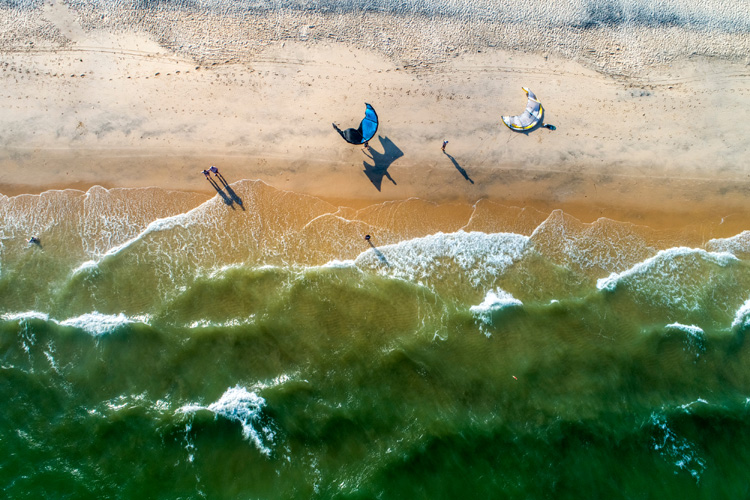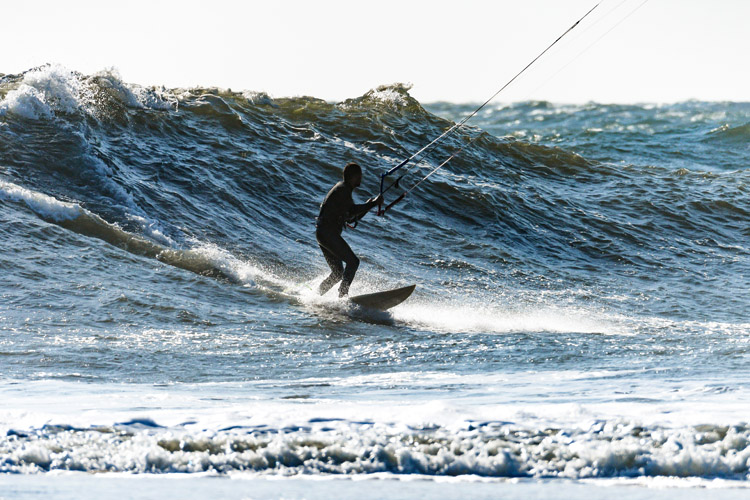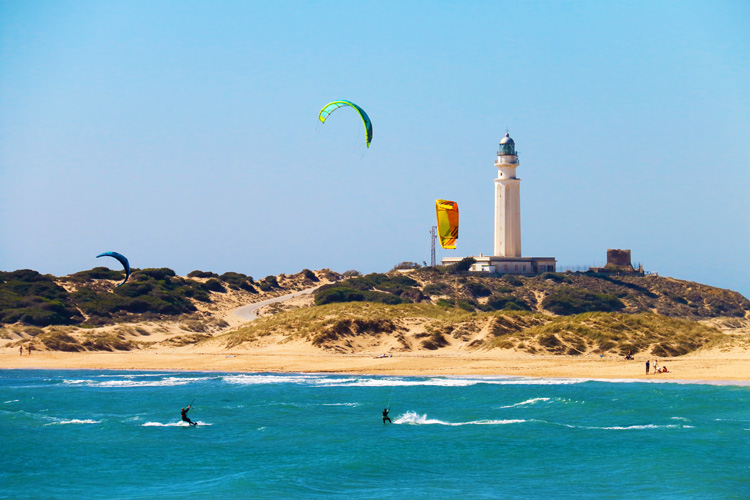Is the wind already waving flags? Are you feeling a breeze on your face? How do you know there's enough wind to launch a kite?
Minimum wind speed is one of kiteboarding's classic dilemmas. One thing is certain: a windless day is for kitesurfing what a flat ocean is for a surfer.
So, what's the minimum wind speed you need to launch a kite, have fun for a couple of hours, and then land it safely on the beach?
The wisest answer depends upon a mix of meteorological, technical, and personal factors.
In other words, a kite will fly depending on average wind speed, the size of the wing, and the weight of the kiteboarder.
Then, there are also a couple of secondary variables that we should consider before unpacking.
For example, don't forget that you may also need minimum wind speed to water relaunch and eventually body drag you back to dry land.
So, check the weather forecast, and make sure you won't face wind lulls in the upcoming hours. For more in-depth info, learn how a kite flies.
Also, turbulence is never a good sign. Strong gusty winds may send your kite crashing to the ground and will damage your kite.

The Magic Number: 12 Knots
As a general rule of thumb, it's fair to say that you can launch a kite with between 5-to-7 knots (5.7-8 mph or 9.2-13 km/h) of wind.
However, ideally, an average rider will need 10 knots (12 mph or 22 km/h) of wind to start flying a kite.
Lighter and heavier kiteboarders will probably need a bit less or more wind, respectively.
For a water relaunch, and depending on the size of the swell, you may need to hold the wingtip at the edge of the wind window and at least 10 knots (11.5 mph or 18 km/h) of wind.
As a safety precaution, do note that if you're not able to keep your kite up in the air for a long time, then it's probably not a good idea to go out into the open ocean.
With marginal wind conditions, there's a good chance you will need to water relaunch the wing or body drag, meaning you won't have enough wind power to get back to terra firma.
Also, if the wind is blowing at 12 knots and lulling at 6 or 7 knots, the wise move is to postpone your kitesurfing session.
This is particularly valid for beginner riders.

Wind Speed and Kite Sizes
Another thing that you must take into consideration is that different kite sizes will need different minimum wind speeds to get airborne.
Larger kites don't need much wind to get airborne, but don't expect miracles - they won't fly in marginal conditions.
Kitesurfing manufacturers usually include a wind range table in each kite they sell.
Check with your brand the minimum and maximum wind speeds suggested for your wing.
Finally, remember that all types of kites - C-kites, bow kites, delta kites, hybrid kites, and foil kites - behave differently while sailing in identical wind conditions.
Let's take a look at the ideal kite wind speed range for a 75-kilogram rider on a typical bow kite with a medium-aspect ratio:
- 17 sqm kite: 8-10.8 knots
- 16 sqm kite: 8.2-11.8 knots
- 15 sqm kite: 8.9-12.4 knots
- 14 sqm kite: 9.8-13.2 knots
- 13 sqm kite: 10.8-14.2 knots
- 12 sqm kite: 12-15.6 knots
- 11 sqm kite: 13.2-17 knots
- 10 sqm kite: 14.8-18.4 knots
- 9 sqm kite: 16.5-20 knots
- 8 sqm kite: 18.2-22 knots
- 7 sqm kite: 20.2-24 knots
- 6 sqm kite: 22.5-26 knots
- 5 sqm kite: 24.8-28.4 knots
In conclusion, kiteboarding is a wind sport that relies on a medium breeze.
Don't waste your time, and don't put your life in danger if it's blowing under 12 knots.
